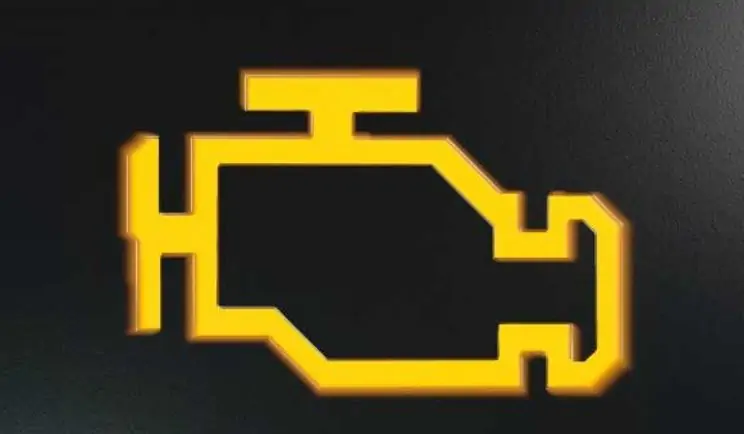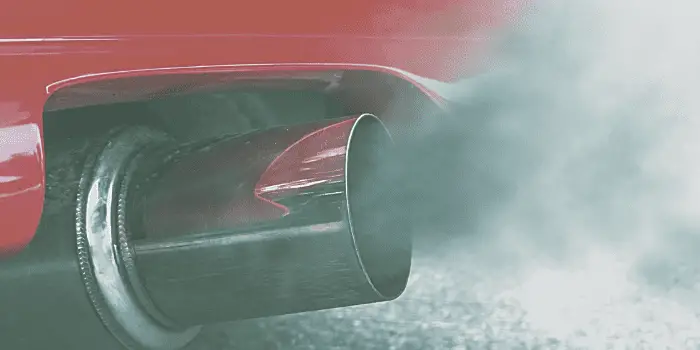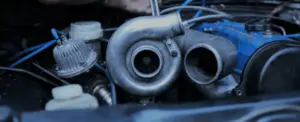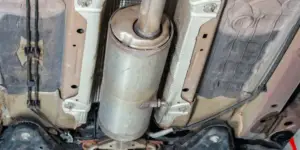Most people have never heard of an EGR valve before, and if your car has been performing well until recently, it’s likely a new part of the car to you too.
This article will explore the most common symptoms of a faulty EGR valve and finish with the rarer signs. It’s quite possible that if your EGR valve is bad, your car displays most of these symptoms.
Briefly though. The main symptoms of a bad EGR valve are in order of likelihood
- Your Car Is Rough At Idle Speed
- Poor MPG
- Your Car Stalls
- Engine Is Making A Knocking Noise
- You Can Smell Gas
- Your Engine Light Is On
- Your Car Feels Sluggish
- Higher Emissions From The Exhaust
1. Your Engine Is Rough Idling
When you start the car, you may notice that it doesn’t run smoothly. There may be a sputter, and the rev counter may jump around too.
This symptom usually happens when the EGR valve is stuck in the open position and sends too much exhaust gas back to the engine.
It will become less noticeable once you start driving, but once you slow down to idle – either because you park or are in a line of traffic – it’ll be there again.
2. You’re Getting Less MPG Than Normal
Once again, The valve that is always open causes increased fuel consumption.
When this happens, the fuel in your engine is being asked to burn at lower temperatures. This is inefficient and causes the ECU car’s computer to send more fuel to the engine.

You may notice quite a rapid drop in the number of miles per gallon you’re getting. It could decrease by ten miles per gallon.
3. Your Car Stalls
Once again, another sign that your EGR is stuck at open is when it stalls soon after you start the engine.
This is really a continuation of the rough idle symptoms, but now the air-fuel mixture within the engine is so beyond the normal expected limits it can’t cause combustion in the cylinders and cuts out.
4. Car Engine Makes A Knocking Noise
There’s not a worse car noise to hear than an engine knocking noise. It conjures up thoughts of bad piston rods and a potentially costly engine rebuild. Luckily it’s not always that bad, and it may be that the EGR is stuck instead.
This noise is a second explosion occurring in the cylinder soon after the first.
Once again, this is caused by the valve being stuck in the open position.
5. Your Car Smells of Gas
The only time you should get a strong smell of gas is when you fill up. If you get it at other times, it’s a sure sign that something is wrong.

If you smell this, it’s a sign that unburned fuel is leaving the tailpipe with the exhaust gases. All the fuel should be burned in the engine to be efficient, leaving nothing to ebb away.
6. Your Engine Light Is On
It’s very likely that your Engine Warning Light has already been activated on your dash to warn you that there is a problem.
The only way to know for sure is to read the fault code stored in your car’s ECU – the car’s computer. All faults are stored there under a code. When you know the code, it’s easy to identify the cause of the fault.

These machines are called OBD fault code readers. They work by being plugged into the car.
They used to be expensive, but now you can buy them for less than $30. If you have one, you’ll save money on mechanics’ diagnostic rates and be able to identify any other problems that your car might be having.
The code most usually related to a bad EGR is P0401
7. Cars Performance Is Sluggish
No one knows how your car should perform better than you. If you notice a drop in power or hesitancy when you try to accelerate, your EGR valve is likely the culprit, coupled with the other signs above.
Driving a car in this condition can be dangerous because you may need your car’s full power to keep you out of harm’s way from other poor drivers.
8. Your Car Produces More Emissions
You may not be aware that your car has poor emissions unless you take it to a mechanic.
The only sign you may have is the smell of gas escaping from your exhaust.

With the valve open, the gas won’t get burned off correctly as the temperature in the engine will be lower than is needed for all the gas to be burned off.
Often read next by other visitors: Can An Oil Change Help Emissions? [FULLY ANSWERED]
What is an EGR Valve?
The Exhaust Gas Recirculation (EGR) job is to recycle a small portion of the exhaust gas to the engine to be combusted again. By doing this, it prevents excess emissions of pollutants into the atmosphere.

It enables cars to pass the stricter emissions targets introduced over the last ten years.
Like any valve, they can clog, which generally happens when one goes bad. Sometimes they’ll stay open, and sometimes they’ll stay closed. In each case, they’ll cause the signs above.
Cost to Replace an EGR Valve
The good news is that you probably won’t need to buy a new EGR valve as often they can be cleaned. This is much cheaper. A can of cleaner costs around $10 and is effective most of the time.
For more information on how to do it, I’ve provided a link to a video.
If you’d rather a mechanic clean the EGR valve for you – many would- expect to pay around $75 to $100 in labor costs.
A replacement EGR valve will cost between $120 and $500, depending on the make and model of your car. Labor costs range from $150 to $350. The total cost will be between $270 and $850.
Can I Continue To Drive With a Bad EGR Valve?
You can continue to drive with a bad EGR valve, but you need to be aware that it will not get better by itself.
Over time it will become more clogged, resulting in poorer performance and higher gas consumption.
Perhaps even worse than this is that it might not be able to be cleaned as it becomes more clogged. This could result in you needing a brand new EGR valve and the costs associated with it.
Can I Replace The EGR Valve Myself?
Sure. If you know your way around the engine and have basic tools, it’s more than possible to replace it yourself.
The good news is you won’t have to get underneath the car as it’s always accessible from the engine bay itself.
A word of caution is that be sure the EGR valve can’t be cleaned. You don’t want to be replacing the EGR valve when a clean would have fixed the problem.
In Conclusion
Poor engine performance, the Engine light illuminating, the smell of unburned fuel coming from the exhaust, failing the emissions test, and rough idling are all signs of a broken EGR valve.
The EGR valve can often be cleaned, so it’s always worth seeing if that is possible before getting a car shop to change it for you.
An EGR valve should last ten years or more and not change during a car’s routine maintenance, but only if it fails.
A sure way to tell if it is the culprit is to buy a fault code reader. It’ll save a lot of time and money and can be used to diagnose additional car problems you might experience throughout the years.



![Can Low Oil Cause Rough Idle? [ANSWERED] low-oil-pressure-dash](https://carzaza.com/wp-content/uploads/2023/12/low-oil-pressure-dash-300x150.png)









